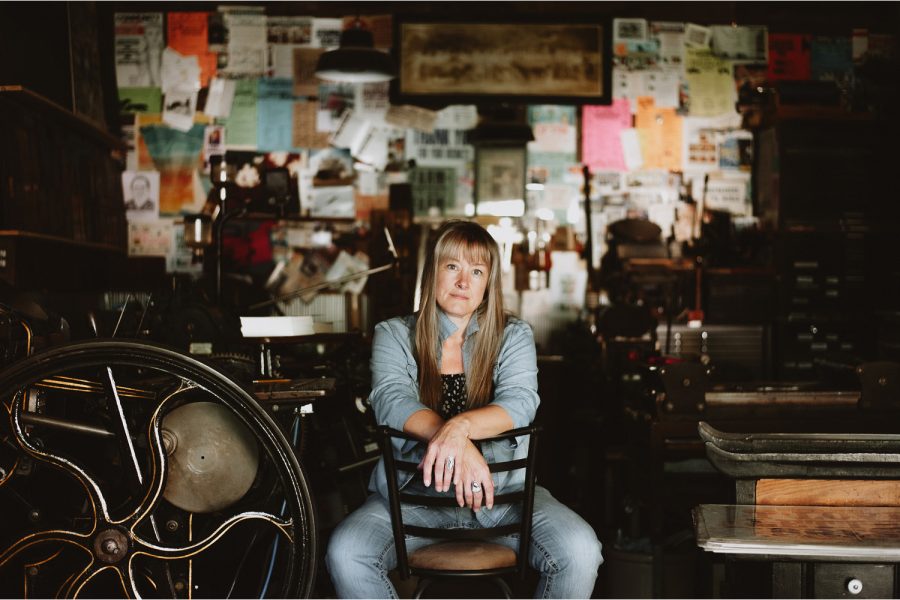Iowa Arts Council offers Folk Arts Grant to Iowan organizations
Iowa’s Department of Cultural Affairs began to offer a Folk Arts Grant last year, which aims to uplift traditional artists whose work does not normally receive government aid.
October 30, 2022
Iowa is home to a variety of forms of folk art, such as pottery, spinning, and sculpting. These art forms play an important role not only in equipping people with valuable skills, but also in holding the community together through the collective creation of art based on everyday life.
The state government decided to uplift these art forms last year when it started offering the Folk Arts Grant.
Jennie Knoebel is a member of the Iowa Arts Council and one of the government officials involved in allotting grant money to Iowan folk artists. She said the grant is designed to support traditional artists who do not normally receive government aid. Any folk artists or folk art organizations can apply until Nov. 1.
The selection is competitive, and chosen applicants may request up to $5,000 from Dec. 1 to June 30, 2023.
“This is funded through the National Endowment of Arts, which is a federal agency,” said Knoebel. “One of their priorities is to support folk and traditional artists because they look at it as an area of the arts that doesn’t normally get a lot of outside support. They distribute money to all the 50 states and territories to support folk and traditional artists locally.”
Knoebel and her team is responsible for allocating this money to promising artists whose works might otherwise suffer.
“It’s artists that wouldn’t necessarily have a formal training,” Knoebel said. “They might not have gone to college. They might have learned their art just through the generations — someone teaching it over time. So, it’s a little bit more community based.”
Knoebel said the government’s recent interest in supporting Iowan folk art may have resulted from its partnership with folk art organizations across the state.
“We have partnered with some key organizations in the past, like the Vesterheim Norwegian American museum, which works for many folk artists not only in the state, but also regionally and internationally.”
Andrew Ellingsen is the director of folk art education at the Vesterheim Norwegian-American Museum and Folk Art School in Decorah, Iowa. This museum supports an array of Iowa art pieces that take inspiration from Scandinavian folk art.
RELATED: Iowa arts groups to receive $1.3 million in relief funds
“The most common Norwegian folk arts are rosemaling, which is a decorative form of painting that has flowers in the design work,” said Ellingsen. “We have various forms of woodworking — anything from dragon carving to chip carving, and then Scandinavian figure carving.”
Ellingsen emphasized the supporting role the Iowa Arts Council plays was crucial for these rare art traditions to continue during the COVID-19 pandemic. Currently, 19 folk artists and instructors teach at Vesterheim.
“We gave them several hours of training in best practices on teaching online because during the pandemic we were closed to the public, and so being able to help our instructors to teach their art forms in an online platform was really helpful,” Ellingsen said.
Knoebel added the Villages Folk School in Keosauqua, Iowa, is another important Iowan folk art organization that has profited through the grant. Melinda Stockwell is the director of the nonprofit organization Villages Folk School.
Despite being a small rural community, Keosauqua is the provenance of a range of folk art forms.
“Our artists range from glassblowing to blacksmithing, rug weaving, pottery, letterpress printing,” Stockwell said. “We have wild edible classes, plein air classes, painting classes, drawing classes, leather crafting, soap making, stained glass, and basket weaving.”
Stockwell said the Villages Folk School often struggles to fund teaching, which in turn makes keeping these art forms alive a challenge. The grant has already provided them with crucial financial aid.
“It helped with the lodging of a professional development instructor from Iowa State University. He was here for a mentorship with a glassblower,” Stockwell said. “It is the passing on from one generation to another that is the crux of folk art. If it wasn’t for that, we never would have been able to lodge this gentleman.”
Knoebel said the Iowa Arts Council aspires to have an even larger impact this year in keeping Iowan art forms alive.
“Folk art is a piece of what the community is and does,” Knoebel said. “It is tied to an individual person’s identity and culture. So, this is something that has been ongoing for years and years that is — part of a tradition, part of a community — that we would like to see passed down.”



